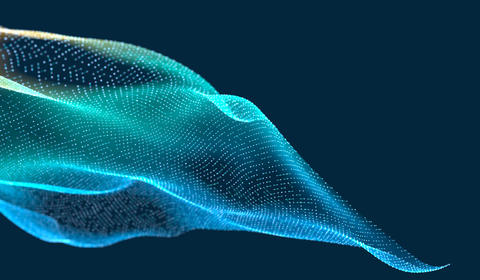
pH dispersion analysis and high-level CFD applications
While the shipping industry’s efforts to reduce greenhouse gas emissions are much discussed, its actions to mitigate other environmental impacts are sometimes not as well documented. Though less known, these efforts are not less vital, and the International Maritime Organization (IMO) is targeting less polluted waters to complement the cleaner skies overhead.
IMO regulations, for example, limit the pH levels and temperature ranges of scrubber wash water in seafaring vessels. With Computational Fluid Dynamics (CFD), shipowners can have their pH levels safely and efficiently estimated to ensure they are within the accepted range.
Keeping an eye on pH levels
For decades, scrubbers onboard vessels have removed sulfur oxides (SOx) and nitrogen oxides (NOx) from ship exhaust, keeping them from escaping into the atmosphere. The exhaust gases are cleaned by spraying them with a buffer solution — usually seawater — and this results in a chemical process that can lead to wash water acidification. This wash water is then discharged overboard.
Since the wash water is more acidic than the surrounding seawater, it can affect water quality and harm marine habitats. The IMO put in place regulations in 2020 aimed at minimizing water acidification. With CFD, shipowners can have their vessels’ pH dispersion analyzed, which helps them check and maintain compliance for this IMO regulation.
What is pH dispersion analysis?
pH dispersion analysis helps shipowners comply with the IMO’s wash water regulations, which impose a pH level above 6.5 within a 4 meter-radius around the discharge pipe outlet. The idea is to ensure that the outlet doesn’t create overly acidic surrounding seawater. Shipowners thus need to verify that their wash water is coming in below accepted levels.
CFD simulations are run to determine if the pH levels of wash water dispersed within the relevant radius around the ship’s discharge pipe outlet meet the IMO’s required level above 6.5. CFD analysis is used specifically to map the discharge and diffusion of the wash water around the ship, and thus estimate the dispersion of more acidic water.
To run the simulations, the following inputs are used:
- The characteristics of the hull where the scrubber outlets are located
- The characteristics of the scrubber system, outflow pipes and pipe diffuser
- Data from the scrubber operating conditions, which can be gleaned from the ship scrubber’s technical documentation
From these inputs, a realistic 3D numerical model can be built, allowing the simulation of the specific ship’s scrubber dilution of discharged wash water at sea. The analysis includes two phases:
- Firstly the nature of the water flow from the discharge pipe is determined. This establishes the pH level of the wash water and enables the monitoring of sulphur oxide and nitrogen levels therein.
- Then the distribution and concentration ratio of the wash water in sea is simulated by CFD in the time domain. This enables the identification of any concentration zone within a 25-meter area around the dispersion pipe outlet. Finally, the pH level is evaluated in these particular zones to determine IMO compliance.
One key advantage of computer simulation is that this kind of analysis can be carried out remotely. There is no need for analysts to be physically present, so long as they have access to technical documentation and specifications of the scrubber system used onboard.
What else can CFD do?
CFD is a branch of numerical analysis in fluid dynamics that uses advanced high-accuracy tools. It can be applied to solve a wide range of problems that require the analysis of the movements of a liquid or gas around or inside an object, over a given time period and in different environmental and operational conditions. pH dispersion analysis is just one of many possible applications of CFD.
Working with Bureau Veritas Solutions M&O
Our global network of experts has over 15 years of experience with complex CFD computations. We use CFD to help our clients stay on the forefront of sustainable development in the shipping industry. We have provided simulations to:
- Verify scrubber equipment compatibility based on wash water characteristics
- Define the most optimal scrubber characteristics for a given vessel to meet IMO regulations beyond pH dispersion analysis, we support major shipping actors with a range of CFD applications, from standard to very high-level. These applications address compliance, but also optimization challenges, including hull form optimization. These solutions are just some of the ways we express our commitment to supporting the shipping industry and sustainable development.
Deputy of Fluid Dynamics Department
BV Solutions M&O
We have the expertise to use computational fluid dynamics in a wide array of applications that help owners and operators meet regulatory requirements. But beyond that, we can also use CFD to support them for improved performance, reliability and safety
